Best Things to Do in Iceland This Year
As the land of fire and ice, Iceland is a masterpiece of natural extremes, where ethereal Northern Lights dance in the sky above icy glaciers, volcanoes rumble under rugged lava fields, and cascading waterfalls cut through lush green valleys.
Yet, Iceland’s allure extends beyond its cinematic landscapes. Its cultural richness, visible in the millennia-old Viking sagas, the charm of its cosmopolitan capital Reykjavík, and the uniquely fresh flavors of its local cuisine, blend together to create an irresistible draw for travelers. From embarking on epic hiking trails and indulging in delightful gastronomic journeys to delving into Viking history and exploring its volcanic geology, Iceland offers a range of experiences that enchant, educate, and inspire.
This year, set your sights on this breathtaking Nordic island, and let the best things to do in Iceland reveal a world where nature’s grandeur meets cultural richness in a captivating symphony of experiences.
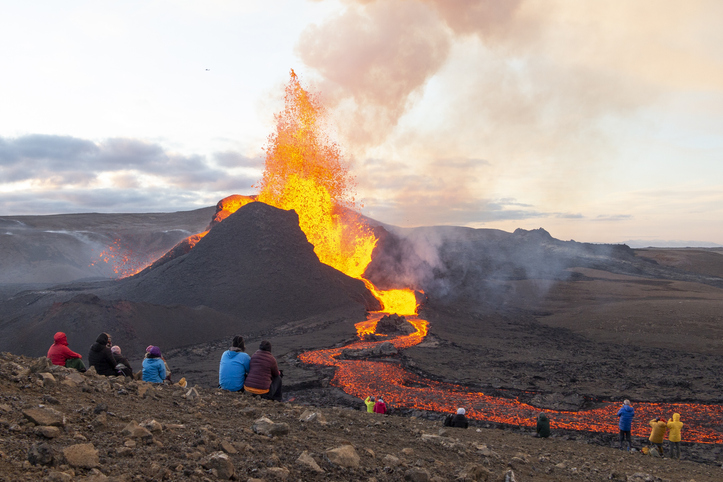
Experience Glacial Power
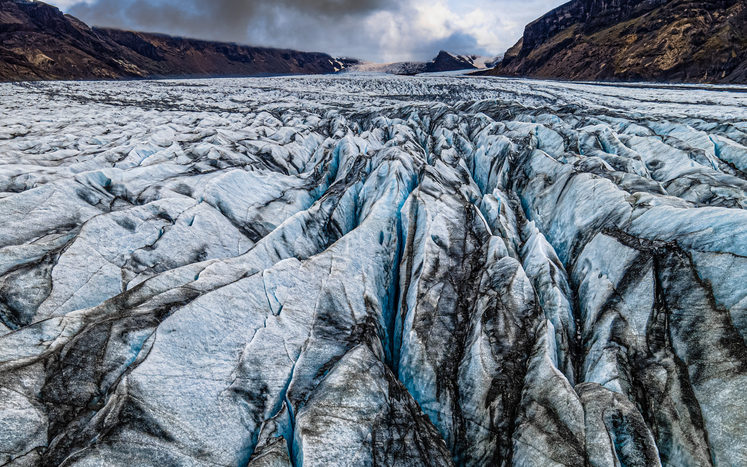
Glaciers cover about 11% of Iceland, making them one of the most defining features of the island nation. Some of the most prominent and visited ones include Vatnajökull, the largest glacier in Europe, and Langjökull and Hofsjökull. Each of these icy behemoths embodies a sublime and nearly otherworldly beauty that has captivated the hearts of travelers.
Vatnajökull, in particular, houses several active volcanoes under its icy dome. This glacier, which is also a national park, has several accessible areas and is known for its scenic hiking routes, offering stunning vistas of ice and fire. Not to mention the breathtaking ice caves, which are accessible via guided tours during winter months. You can explore these ethereal caves with their blue ice and magnificent ice formations that seem more like a work of art than a natural phenomenon.
But beyond the well-trodden path lie lesser-known icy wonders. Drangajökull in the remote Westfjords, the fifth largest glacier in Iceland, is the only one that has not receded in recent years. Einhyrningur, which translates to ‘Unicorn’, is an obscure and challenging glacier with a single peak that attracts thrill-seekers and mountaineers.
Some glaciers, like Sólheimajökull, offer guided glacier walks where you can strap on crampons and explore the crevasses and ice sculptures, whereas others, like Snæfellsjökull, offer snowmobile tours. Visitors can expect a range of experiences, from serene contemplation of Iceland’s stark beauty to adrenaline-fueled adventures. Remember, though, the glaciers are ever-changing and can be dangerous, so guided tours are always recommended for safety.
Witness the Geysers
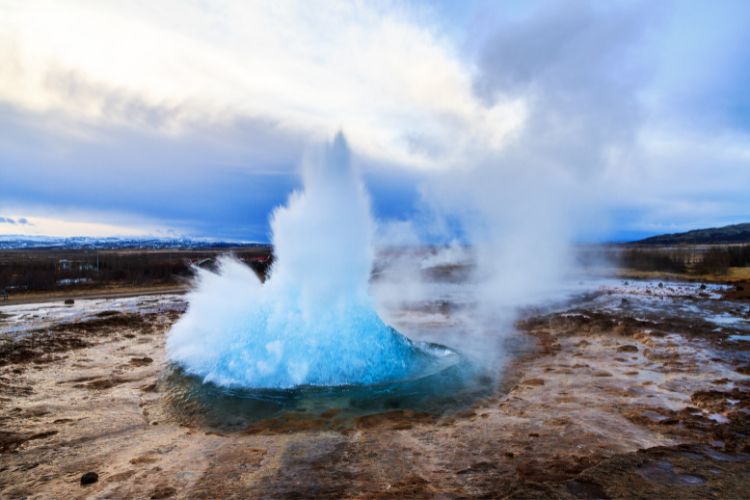
Geysers are an integral part of Iceland’s geothermal activity, adding a sense of anticipation and excitement to the island’s landscape. The country’s geysers are scattered throughout, but the most famous is undoubtedly Geysir in the Haukadalur valley. This area, often referred to as the “geyser,” is one of the stops on the popular Golden Circle tourist route. Geysir, from which the English term “geyser” derives, has been somewhat inactive in recent years. However, its neighbor, Strokkur, is not to be overlooked. Strokkur erupts every 6-10 minutes, shooting a column of boiling water and steam up to 30 meters in the air. The predictability of Strokkur’s eruptions creates a sense of suspense for visitors as they wait for the earth to display its raw power.
However, it’s not just the well-known geysers that hold appeal. In the geothermal area of Hveravellir, located in the remote central highlands of Iceland, you can find the charming geyser, Bluaugur, or “Blue Eye.” This less-frequented geyser offers a more tranquil experience and boasts beautiful azure blue water.
Another area of interest is the Geysir Hot Spring Area, home to numerous smaller geysers and hot pools. Each geyser in Iceland offers a unique experience. The sudden eruption of water and steam is not just a momentary spectacle—it’s a powerful reminder of the active geology lying just beneath Iceland’s surface. A visit to these geysers, whether they’re frequently-visited or off-the-beaten-path, offers a chance to witness the volatile beauty that Iceland is renowned for.
Gaze Upon the Northern Lights
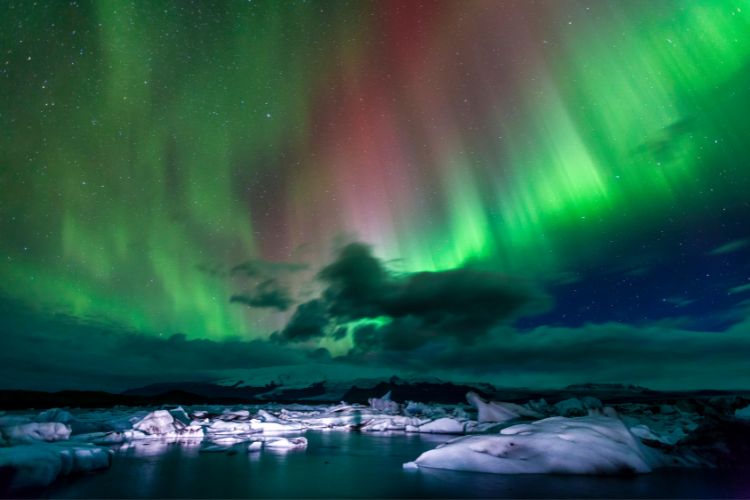
The Northern Lights, or Aurora Borealis, are one of the most enchanting and sought-after natural phenomena that Iceland offers. These celestial displays of green, purple, pink, and sometimes red lights dancing across the night sky create a mesmerizing spectacle that captures the imagination and leaves lasting memories. Iceland, with its dark, clear nights and high latitude, provides excellent conditions for viewing this wonder. The ideal time to see the Northern Lights in Iceland is during the winter months, from late September to early April, when the nights are longest. However, the lights are a natural phenomenon and sightings can never be guaranteed; they depend on solar activity and clear, dark skies.
RELATED: An Ideal Itinerary for Visiting Iceland During Winter
While the Northern Lights can be seen from virtually anywhere in Iceland, including from the capital, Reykjavík, on particularly active and clear nights, some locations are especially famous for their views. Among these are the Jökulsárlón Glacier Lagoon in the southeast, the secluded Westfjords in the northwest, and the dark skies of Thingvellir National Park, a short drive from Reykjavík and a part of the Golden Circle route.
For those who seek comfort while chasing the aurora, there are numerous hotels and guesthouses throughout the country offering Northern Lights wake-up calls and hot tubs from which to enjoy the show.
For the more adventurous, guided Northern Lights tours can add a dash of thrill to the experience, whether on a super jeep tour, a snowmobiling and BBQ adventure, or even a boat trip away from the coastal city lights. Experiencing the aurora borealis in Iceland is truly a magical and humbling experience, a display of nature’s grandeur that connects us with the cosmos.
Traverse the Landscape by Hiking
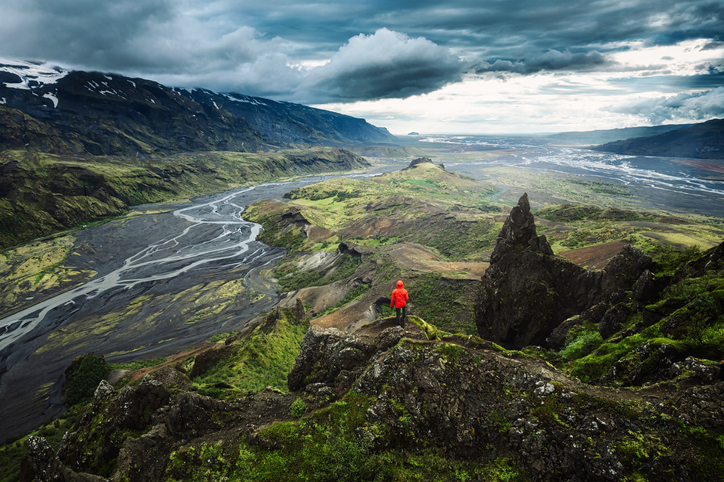
Iceland is a hiker’s paradise, with some of the most diverse and stunning landscapes on Earth. Trails crisscross the country, traversing rugged lava fields, rolling green hills, steep mountain slopes, and expansive glaciers, offering an up-close experience of Iceland’s natural beauty and geological wonders. One of the most renowned treks is the Laugavegur Trail, a 55 km journey that stretches between Landmannalaugar and Þórsmörk. This multi-day hike unveils a palette of colorful rhyolite mountains, vast black sand deserts, natural hot springs, and glacier views, providing an immersive wilderness experience.
For those seeking a shorter, yet still challenging, trek, the Fimmvörðuháls Trail is a superb option. This path takes hikers from Þórsmörk to the Skógar waterfall, across the pass between the Eyjafjallajökull and Mýrdalsjökull glaciers, where you can witness fresh craters and solidified lava from the 2010 eruption.
In Skaftafell, part of Vatnajökull National Park, several trails lead to natural wonders such as Svartifoss waterfall, surrounded by dark basalt columns, and glacier tongues.
For coastal scenery, the trails around the Snæfellsnes Peninsula offer picturesque vistas of rugged cliffs, sparkling fjords, and the iconic Snæfellsjökull glacier.
Reykjadalur Valley, a short drive from Reykjavík, offers an easy-to-moderate hike with a rewarding hot river for bathing.
Whether you are an experienced hiker or a beginner, Iceland’s trails offer something for everyone. The trails vary in difficulty and length, accommodating a variety of fitness levels and timeframes. Each trail offers a unique perspective of Iceland’s unrivaled landscapes, and with every step, you’ll uncover a new facet of the country’s raw, elemental beauty. Always remember, though, that the weather can change rapidly, so proper preparation and equipment are crucial for a safe and enjoyable hike.
Witness Dramatic Waterfalls
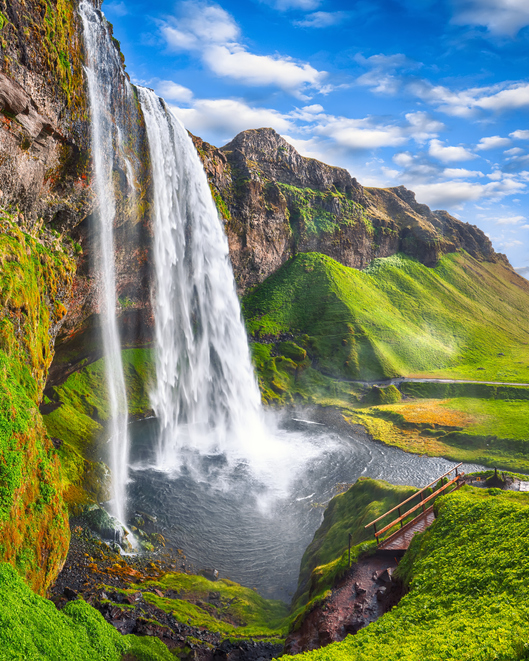
Iceland is also a land of incredible waterfalls, or “foss” in Icelandic. With thousands spread across the country, each waterfall carries its own unique charm and majesty. Among the most famous is Gullfoss (“Golden Waterfall”), part of the iconic Golden Circle route. This magnificent two-tiered waterfall plummets into a deep canyon, creating a dramatic spectacle, especially when the sun casts a rainbow across the spray.
Another popular waterfall is Seljalandsfoss, unique for the footpath that leads behind the cascading water, offering a distinctive vantage point. Skógafoss, known for its classic rectangular shape, is a powerful waterfall that you can approach up close or admire from above after climbing a staircase next to it.
Dettifoss, located in the northeast of Iceland, is renowned as the most powerful waterfall in Europe. The thunderous roar of the water plummeting into the Jökulsárgljúfur canyon is an unforgettable testament to the raw power of nature. Dettifoss gained international recognition when it was featured in scenes of Ridley Scott’s 2012 film “Prometheus,” where its sheer size and might provided a fitting backdrop to the movie’s epic themes of creation and destruction.
In addition to Dettifoss, the nearby Selfoss and Hafragilsfoss, also on the river Jökulsá á Fjöllum, are worth a visit. Selfoss, although smaller, presents a broad curtain of water cascading down a series of cliffs, creating a uniquely picturesque scene. Hafragilsfoss, downstream from Dettifoss, is often overlooked but is impressive in its own right and offers a different perspective on the mighty river.
Another notable waterfall is Godafoss, or “Waterfall of the Gods.” Located in the north of Iceland, this semi-circular waterfall is not only a natural beauty but also a site of historical significance. According to legend, it’s where statues of the old Norse gods were discarded when Iceland converted to Christianity in the year 1000.
Svartifoss, or “Black Waterfall,” located in Skaftafell within the Vatnajökull National Park, is another must-see. It’s famous for its dark, hexagonal basalt columns, which inspired the design of the Hallgrímskirkja church in Reykjavik.
But beyond these well-known sites lie hidden gems that can offer a more serene experience. Glymur, once considered the tallest waterfall in Iceland, requires a moderately challenging hike to reach, making it less frequented by tourists. The hike itself is part of the appeal, with a scenic trail that includes crossing a river on a log bridge. Háifoss, the “High Waterfall,” located near the highlands, drops from a height of 122 meters into a striking canyon. Meanwhile, tucked away in the Westfjords, you’ll find Dynjandi, a series of waterfalls with a cumulative height of 100 meters, resembling a bridal veil. There are a range of tour operators that can take you to some of the more popular waterfalls, or you can arrange a private tour that’s customizable to see select waterfalls.
Video of Exploring Iceland by the Winetraveler Team
Unique Wildlife
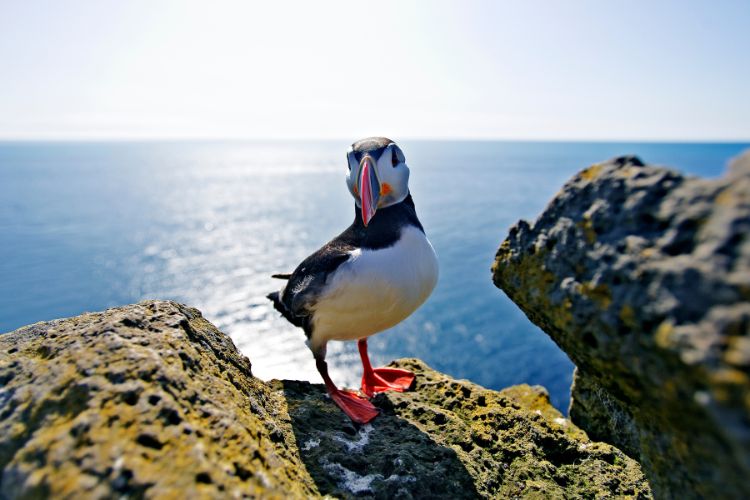
One of the highlights of any visit to Iceland is undoubtedly the chance to witness its unique and fascinating wildlife. The country is a haven for bird watchers, with over 300 species calling the country home, including the endearing puffin. Known for their colorful beaks and expressive eyes, puffins are found in several parts of the country, with notable colonies on the Westman Islands and cliffs such as Látrabjarg in the Westfjords and Dyrhólaey on the south coast.
In the surrounding waters of Iceland, there is abundant marine life. Iceland is one of the top destinations for whale watching, with the opportunity to see minke whales, humpback whales, orcas, and even the colossal blue whale. Husavik, in the north, is often hailed as the whale-watching capital of Iceland, but tours also run from Reykjavik, Akureyri, and other coastal towns. Harbor porpoises and white-beaked dolphins are also commonly seen.
On land, keep an eye out for the Arctic fox, the only native land mammal in Iceland. These can be spotted all around the country, but the Westfjords’ Hornstrandir Nature Reserve is a protected haven where they have no natural predators.
Soak in the Hot Springs
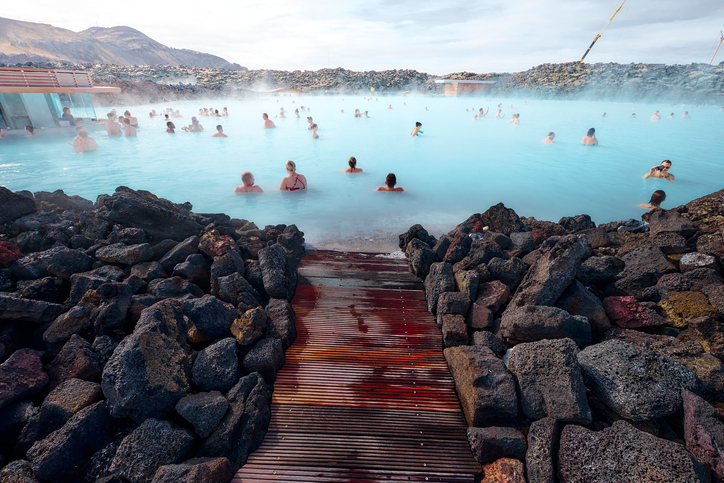
Iceland itself sits atop a geothermal hotspot, and is renowned for its numerous natural hot springs that offer an opportunity to bathe in warm and sometimes hot water, right in the middle of nature.
Among these, the Blue Lagoon near Reykjavik is perhaps the most famous. Its milky-blue waters, rich in minerals like silica and sulfur, are said to have skin-healing properties. The Blue Lagoon offers a luxurious spa experience, with in-water massages, a sauna, and a restaurant on-site.
Yet, the country is dotted with many other hot springs, both well-known and tucked away, that provide a more rustic and serene soaking experience. The Secret Lagoon in Flúðir, one of the oldest swimming pools in Iceland, maintains a temperature of 38-40 degrees Celsius year-round and provides a charming, more quiet alternative to the Blue Lagoon.
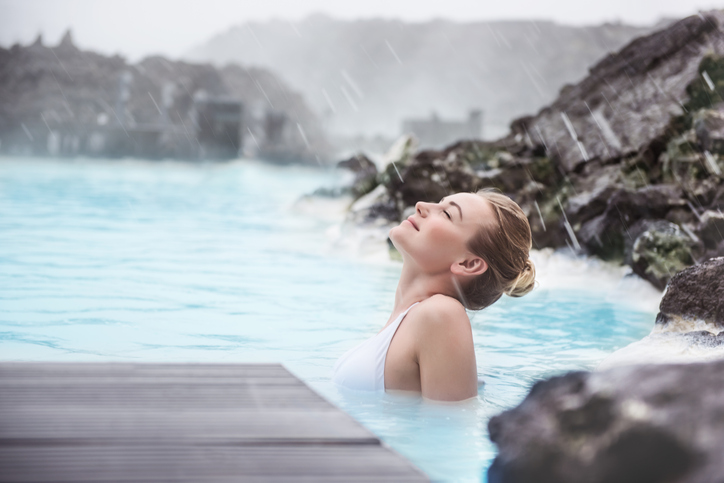
The geothermal area of Landmannalaugar, known for its hiking trails, also has a natural hot spring perfect for a soothing dip after a day’s trek.
Those seeking an off-the-beaten-path experience might consider Hveravellir, located in the central highlands, offering a hot spring pool right in the middle of the wilderness.
In the Westfjords, you’ll find Hellulaug and Gvendarlaug, two natural pools with beautiful settings. The northern town of Húsavík even boasts a geothermal sea bath, akin to the Blue Lagoon but with a wonderful view of the ocean and Skjálfandi Bay.
See the Midnight Sun
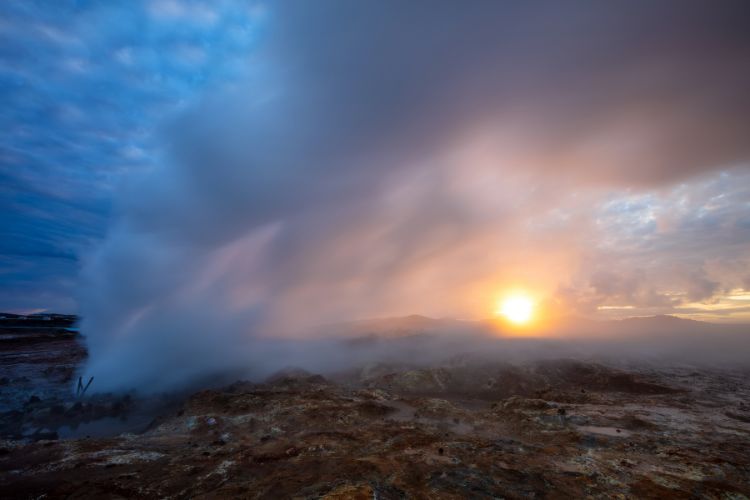
The midnight sun, an awe-inspiring natural phenomenon occurring in summer, is one of the many reasons to visit Iceland. Due to its high latitude, Iceland experiences nearly 24 hours of daylight around the summer solstice, typically June 21st. This happens when the tilt of the Earth’s axis results in the North Pole facing towards the sun, and the sun doesn’t fully set and instead hovers around the horizon before rising again. The result is a beautiful, seemingly endless sunset-sunrise fusion, where the sky is painted with vibrant hues of pink, orange, and gold throughout the night.
Experiencing the midnight sun is an incredible opportunity for travelers visiting Iceland in the summer. It not only allows more daylight for exploring but also creates an enchanting atmosphere. Almost anywhere in Iceland offers a spectacular midnight sun experience, but some locations are particularly noteworthy. The Reykjanes Peninsula, home to the iconic Reykjanesviti Lighthouse, provides a panoramic view of the sun dipping towards the ocean.
In the north, the dramatic landscapes around Lake Mývatn offer a beautiful backdrop for the low-lying sun. One of the most popular places to witness this spectacle is from the cliffs of Dyrhólaey in the south, where you can see the sun set and rise over the Atlantic Ocean.
Similarly, the scenic landscapes of the Snæfellsnes Peninsula on the west provide breath-taking vistas under the midnight sun. Whether you choose to simply enjoy the extended twilight, embark on a midnight sun photography tour, or even take a late-night whale watching cruise, the midnight sun provides a unique and memorable Icelandic experience.
Sample Icelandic Cuisine
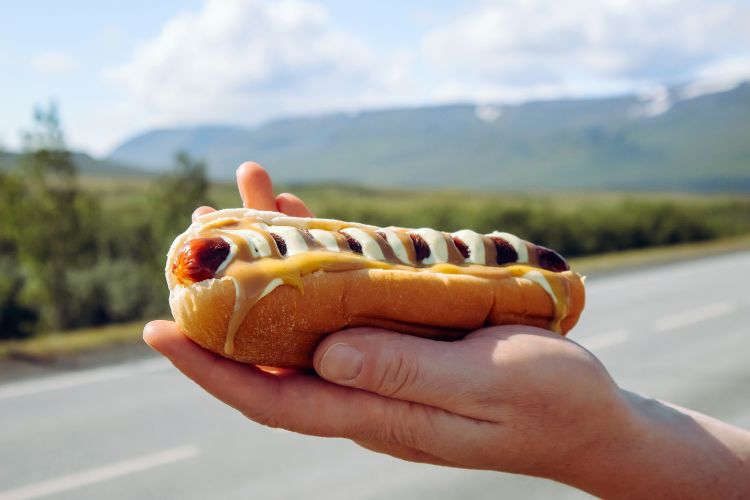
Icelandic cuisine is deeply rooted in the country’s history and traditions, offering a unique and authentic culinary experience for visitors. Traditionally, it focuses on locally sourced ingredients from the sea, farms, and the wild. Seafood plays a major role, with dishes like Plokkfiskur (a creamy fish stew), traditional fish and chips, and even Hákarl (fermented shark) for the more adventurous eaters. Lamb is also a staple, often roasted or used in hearty stews. Skyr, a traditional Icelandic dairy product similar to yogurt but technically a type of cheese, is enjoyed both plain and flavored, and is a must-try. More recently, New Nordic Cuisine has made an impact, emphasizing seasonal, sustainable, and local ingredients prepared with modern techniques.
For an upscale dining experience showcasing the best of Icelandic and modern Nordic cuisine, Dill Restaurant in Reykjavik (Laugavegur 59, 101 Reykjavík, Iceland: +354 552 1522) is an excellent choice. As the first restaurant in Iceland to receive a Michelin star, Dill offers a weekly changing menu that highlights seasonal Icelandic ingredients.
Matur og Drykkur, also in Reykjavik (Grandagarður 2, 101 Reykjavík, Iceland: +354 571 8877), is known for its creative twists on traditional Icelandic dishes.
For seafood lovers, Fiskmarkaðurinn (The Fish Market – Aðalstræti 12, 101 Reykjavík, Iceland: +354 578 8877) offers a range of fresh and expertly prepared seafood dishes.
Outside of Reykjavik, try Tjöruhúsið in the Westfjords (Neðstakaupstað, 400 Ísafjörður, Iceland: +354 456 4419), widely considered one of the best seafood restaurants in the country.
For a more casual meal, try Icelandic street food such as the famous hot dogs at Bæjarins Beztu Pylsur in Reykjavik, or sample fresh pastries and bread at a local bakery such as Brauð & Co.
Remember, part of the experience is trying new things, so don’t shy away from unique offerings like Minke whale, fermented shark or puffin, if you’re open to it.
Taste Local Brews and Spirits
Iceland’s craft beer and spirits scene has been burgeoning over the past few years, with numerous breweries and distilleries emerging, each with its unique spin on local brews. Thanks to Iceland’s pristine water quality, Icelandic beers are known for their crisp, clean taste. Some breweries like Bruggsmiðjan Kaldi in the north and Ölvisholt Brewery in the south offer tours and tastings, where visitors can learn about the brewing process and sample a range of beers. In Reykjavik, Micro Bar (Laugarvegur 86, 101 Reykjavík, Iceland: +354 859 9639) and Skúli Craft Bar (Aðalstræti 9, 101, 101 Reykjavík, Iceland: +354 519 6455) offer a wide selection of local craft beers on tap, providing a great introduction to the Icelandic beer scene.
Besides beer, Iceland is home to several unique spirits. Brennivín, often referred to as “Black Death,” is a traditional Icelandic schnapps and is the country’s signature distilled beverage. It’s made from fermented grain or potato mash and flavored with caraway. The Reykjavik Distillery produces a range of handcrafted Icelandic spirits, including schnapps and liqueurs flavored with native berries such as crowberries, blueberries, and rhubarb. For a more unusual pairing, you might try Hákarl (fermented shark) paired with Brennivín, a traditional combination.
Go Ice Climbing
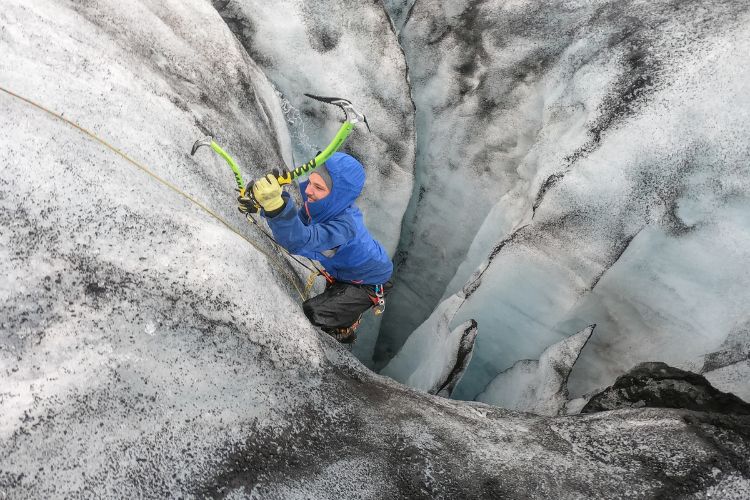
Ice climbing is a thrilling and challenging winter sport, and Iceland, with its stunning glaciers and icefalls, provides a fantastic playground for both beginners and seasoned climbers. The sport involves ascending ice formations, including frozen waterfalls and ice-coated rock faces, using specialized equipment such as ice axes and crampons. Ice climbing in Iceland isn’t just about the physical challenge, it’s also a chance to explore the beauty of the country’s icy landscapes up close, from the blue hues of the dense ice to the dramatic shapes and textures formed by glacial movement.
There are numerous opportunities for ice climbing across the country. The popular climbing areas are primarily on the many glaciers spread throughout Iceland. Sólheimajökull, a part of the larger Mýrdalsjökull glacier in the south, is a favorite location due to its easy accessibility and variety of ice walls. It offers a range of climbs suitable for beginners to more experienced ice climbers. Vatnajökull, the largest glacier in Europe, is another prime location offering an incredible ice climbing experience amid breathtaking scenery.
Ice climbing excursions are typically led by certified guides who provide the necessary training and equipment, ensuring a safe and enjoyable experience. Keep in mind that weather conditions can greatly affect the safety and availability of ice climbing, so always check with experienced local guides or tour operators.
Experience Other-Worldly Landscapes
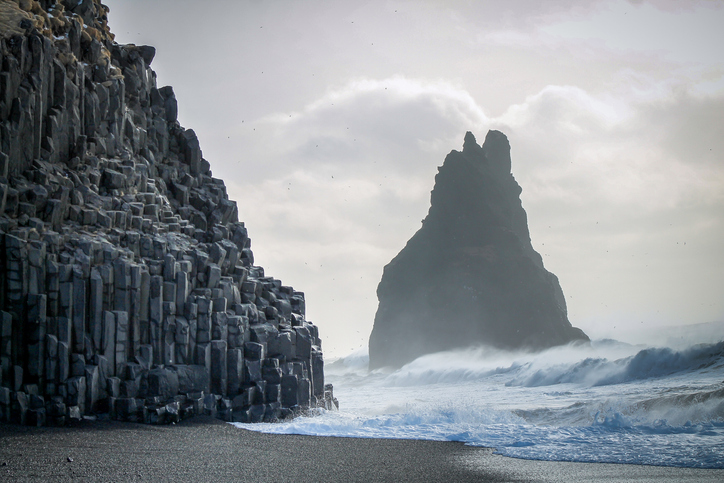
We’ve already talked about glaciers, waterfalls and hot springs, but Iceland’s diverse landscapes go on and on.
One of the most striking features of the country is its black sand beaches, formed by volcanic eruptions over the centuries. The most famous of these is Reynisfjara, located on the south coast near the town of Vík. With its enormous basalt columns, roaring Atlantic waves, and stunning views of the Reynisdrangar sea stacks, Reynisfjara offers a unique and dramatic beach experience.
Other noteworthy black sand beaches include Djúpalónssandur on the Snæfellsnes Peninsula and Diamond Beach near Jökulsárlón, where icebergs from the lagoon often wash ashore on the black sand, creating a surreal and beautiful contrast.
But Iceland’s variety doesn’t stop at its beaches. Venture inland and you’ll find crystal clear ice caves in Vatnajökull glacier, offering an ethereal beauty that’s almost otherworldly.
Meanwhile, the lush green valleys of Þórsmörk, enclosed by glaciers and mountains, provide hiking trails through birch forests, along rivers, and up high peaks.
And don’t forget the rugged lava fields, remnants of Iceland’s powerful volcanic activity. The moss-covered Eldhraun lava field in the south, formed by a massive eruption in the late 18th century, has an alien beauty that’s both stark and captivating. The Þingvellir National Park, a UNESCO World Heritage site, showcases the meeting point of the North American and Eurasian tectonic plates amidst a landscape of fissures, lava rocks, and crystal-clear waters.
Viking History
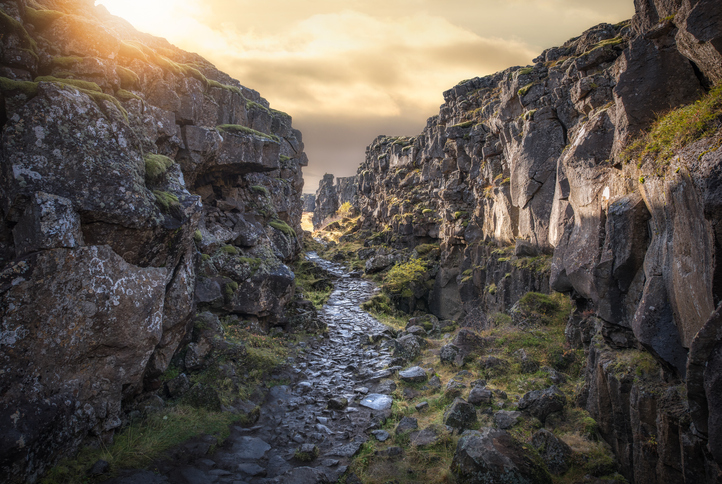
Iceland’s rich Viking history is another compelling reason for visitors to explore this fascinating country. Settled in the late 9th century by Norse explorers, Iceland is deeply rooted in Viking heritage, and the sagas—prose histories detailing these early settlers’ lives—are still very much part of the cultural fabric. Many of these sagas, filled with tales of conflict, power, love, and mystical elements, are centered on real places across Iceland, giving visitors the chance to delve into these narratives firsthand.
A particularly intriguing saga is the Egil’s Saga, which tells the story of Egil Skallagrímsson, a warrior-poet with a complicated character. You can journey through the places where Egil lived in Borgarfjörður, in west Iceland, including Reykholt, where the most significant medieval scholar, Snorri Sturluson, lived. Snorrastofa Cultural and Medieval Centre is dedicated to Snorri’s life and works, and it’s a wonderful resource for learning about the sagas and medieval Iceland. Snorri’s pool, a geothermally-heated pool where he is said to have composed poetry and entertained guests, can still be visited today.
Another saga-rich location is the stunning Þingvellir National Park, site of the Althing, one of the world’s oldest parliaments founded by Vikings in 930 AD. This is where major legal and political decisions were made, and disputes were settled.
For an immersive Viking experience, Winetravelers shouldn’t miss the Viking World Museum in Reykjanesbær, which houses an exact replica of a 9th-century Viking ship. The Settlement Exhibition in Reykjavík is also a must-see, showcasing a preserved archaeological ruin that provides insight into Viking life.
The yearly Viking Festival in Hafnarfjörður, a town steeped in folklore and historical significance, is another engaging experience. Here, Viking history comes alive with reenactments, traditional crafts, music, and food.
Each of these sites and events provides a fascinating glimpse into the world of the Vikings, their customs, and their legacy, offering a rich layer of historical context to any visit to Iceland. Whether you’re a history buff or simply appreciate compelling stories and cultural exploration, delving into Iceland’s Viking heritage is an adventure in its own right. Snag a ticket to the National Museum of Iceland beforehand.
Volcanic Exploration
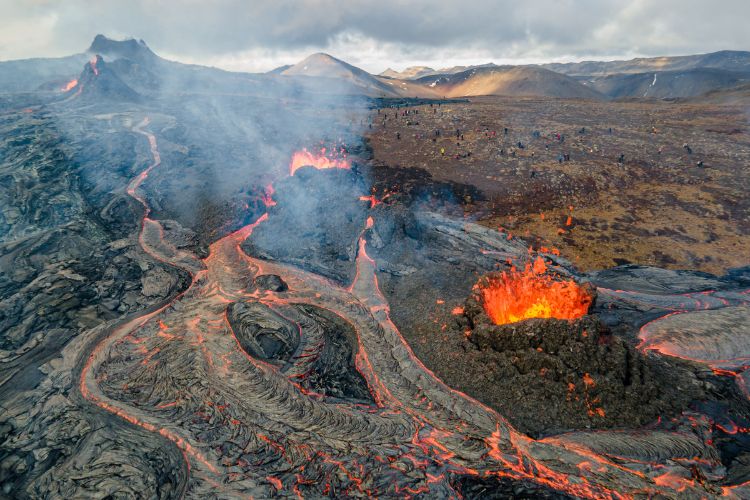
Iceland’s position on the mid-Atlantic Ridge, the divergent boundary between the Eurasian and North American tectonic plates, makes it one of the most volcanically active places in the world. This unique geological setting presents an enticing opportunity for visitors to explore active volcanoes and learn about the country’s seismic activity. With more than 130 volcanic mountains, many of which have erupted in the recent past, volcanic landscapes have significantly shaped Iceland’s unique and rugged terrain.
For the adventure seekers, a visit to an active volcano can be a highlight of their Icelandic journey. Fagradalsfjall, in the Reykjanes Peninsula, is one such location where you can observe an active volcano up close. Since its eruption in 2021, it has been a popular destination for hikers. Remember that safety is paramount when visiting active volcanic sites, so it’s advised to do so with a guide or as part of a guided tour.
The Þríhnúkagígur volcano, located around 20 kilometers from Reykjavik, offers a truly unique experience. Here, you can descend into the magma chamber of the dormant volcano. Inside, you’ll find stunning colors left behind by the minerals in the cooled lava.
There are also several geothermal parks, like the Geysir Geothermal Area and the Seltún Geothermal Area, where visitors can witness the power of geothermal activity and learn about Iceland’s unique geology.
Whether you choose to trek across a lava field, descend into a volcanic chamber, or simply admire the volcanic landscapes from afar, exploring Iceland’s volcanoes is a truly unforgettable experience.
Horseback Riding
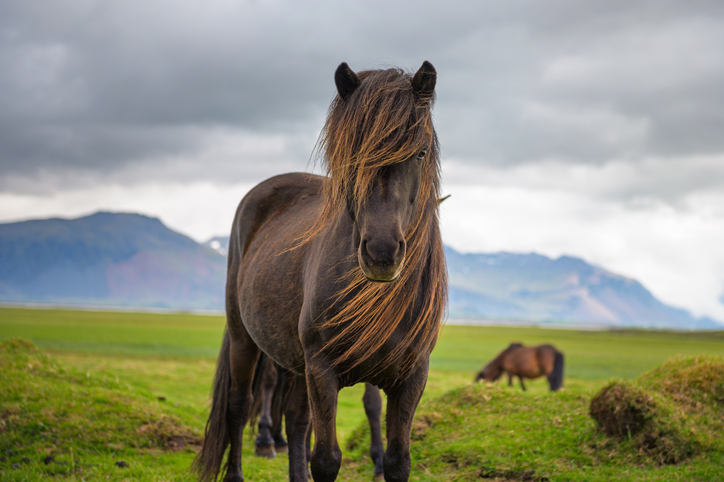
Horseback riding in Iceland offers a unique and immersive way to explore the country’s varied landscapes while bonding with the Icelandic horse, a breed that has been pure since the time of the Vikings.
Renowned for their intelligence, strength, and gentle temperament, these horses are exceptionally well-suited to the Icelandic terrain. They also hold a special place in the hearts of Icelanders and have deeply influenced the country’s history and culture. What sets the Icelandic horse apart from other breeds is their fifth gait, the tölt, a smooth and steady rhythm that provides a comfortable ride over long distances.
Whether you’re a seasoned rider or a complete beginner, horse riding tours are available throughout the country and can last from a couple of hours to several days. Ride along black sand beaches, through green valleys, or even across a glacier, guided by skilled local horsemen who can share insights about the land and the horses.
Laxnes Horse Farm near Reykjavik offers various tours catering to different skill levels, while Ishestar Riding Tours provides options including a beach ride near Hafnarfjörður and a lava tour on the outskirts of Reykjavik. Vik Horse Adventure Tours also provides a super special black sand beach horseback riding experience.
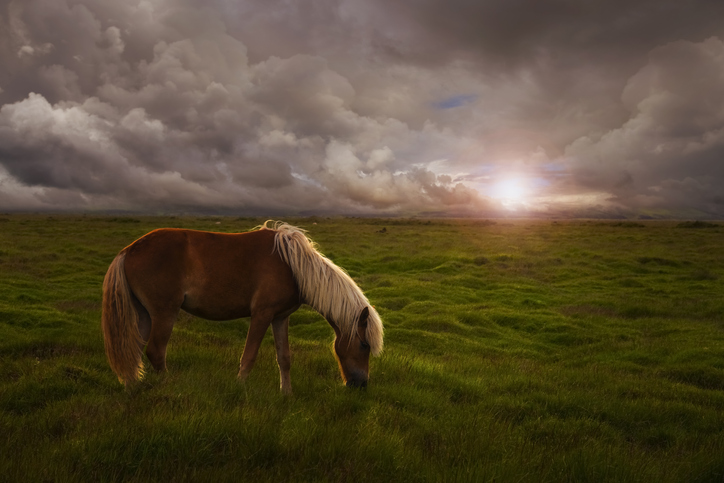
If you’re up for a multi-day riding adventure, Eldhestar offers multi-day tours that traverse rivers, mountains, and hot springs. Riding an Icelandic horse through the country’s epic landscapes offers a unique perspective and a deeper connection to the land. It’s a truly Icelandic experience that you won’t want to miss.
Caving Adventures
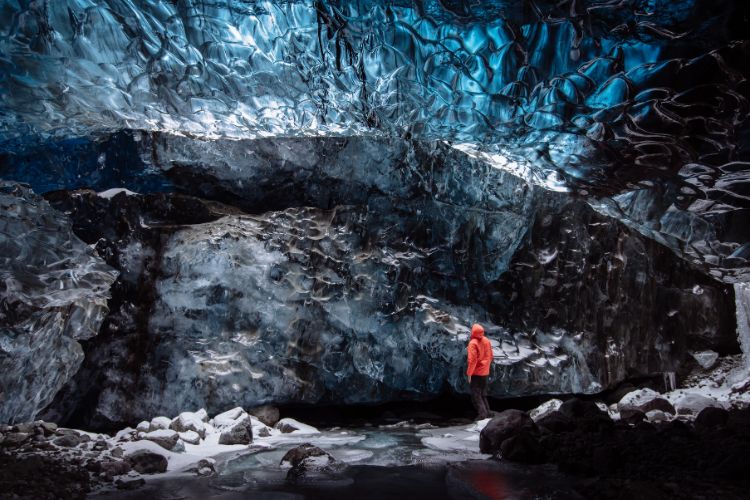
Iceland’s diverse geological activity has created a wealth of subterranean wonders just waiting to be explored. Caving, also known as spelunking, provides a unique opportunity to delve into these incredible underground landscapes.
In particular, Iceland is renowned for its lava tubes – cave-like structures formed during volcanic eruptions when the outer layers of a lava flow cool and harden while the molten lava beneath drains away. These vast tunnels offer a window into the fiery forces that have shaped much of Iceland’s dramatic landscape.
One of the most famous lava tubes in Iceland is the Lofthellir Ice Cave in the Lake Mývatn area, renowned for its spectacular ice formations.
Leidarendi Cave in the Blue Mountains area, near Reykjavík, is another popular spot, with a complex network of tunnels and rooms, some filled with beautiful stalactites and stalagmites.
For ice caving, Vatnajökull, as we’ve mentioned before is Europe’s largest glacier, unveils beautiful ice caves each winter, featuring a dazzling display of blue ice. Visiting these caves with experienced guides ensures safety and provides enriching information about their formation and geology.
There are multi-day Iceland tours you can book that include caving with small groups. Alternatively, you can arrange private caving experiences more tailored to your personal travel preferences.
Super Jeep Tours
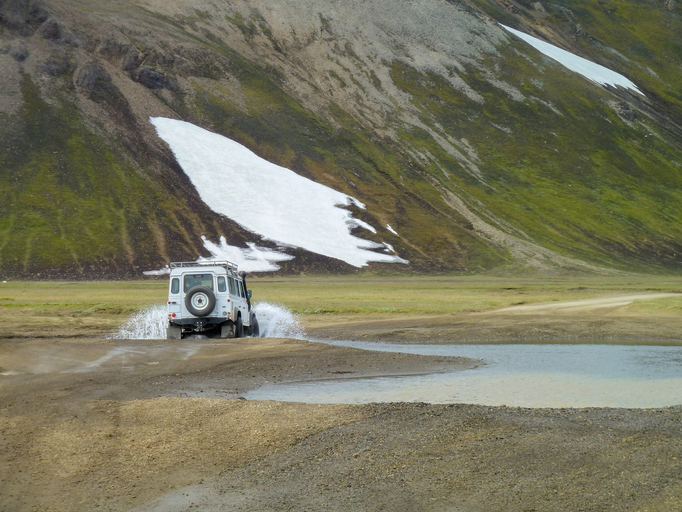
Super Jeep tours in Iceland offer thrill-seekers the opportunity to traverse the rugged and diverse landscapes in a unique way. These customized vehicles, fitted with oversized tires and specialized equipment, can navigate through rough terrains, river crossings, and even snowy conditions that would be challenging for regular vehicles. This means that Super Jeeps can access remote areas of Iceland’s highlands, glaciers, and volcanic terrains, often off-limits to standard modes of transport. It’s not just about reaching these destinations – the journey itself is a thrill, offering the chance to experience off-road driving across Iceland’s dynamic terrain.
The tours are typically led by experienced drivers who know the terrain well and can provide insight into the geological and cultural significance of the areas you explore. Popular Super Jeep destinations include Þórsmörk, a nature reserve surrounded by glaciers and known for its hiking trails, and Landmannalaugar, a geothermal wonderland in the Icelandic highlands known for its colorful rhyolite mountains and hot springs.
During winter, Super Jeeps are an excellent way to go hunting for the Northern Lights, as they can reach secluded spots away from light pollution. In summer, you can embark on a tour to the top of the Eyjafjallajökull or Mýrdalsjökull glaciers for panoramic views of the south coast. For a private (but more expensive experience), book a tour with Mountain Taxi. For a tour of the Thorsmork highland region, schedule a tour with Midgard Adventure. For an ice cave expedition in one of these units, book with Troll Expeditions. Holiday Tours offers Super Jeep Northern Lights experiences, just keep in mind that seeing the Northern Lights is never guaranteed depending on seasonal and weather conditions.
Snorkeling and Scuba Diving in Silfra
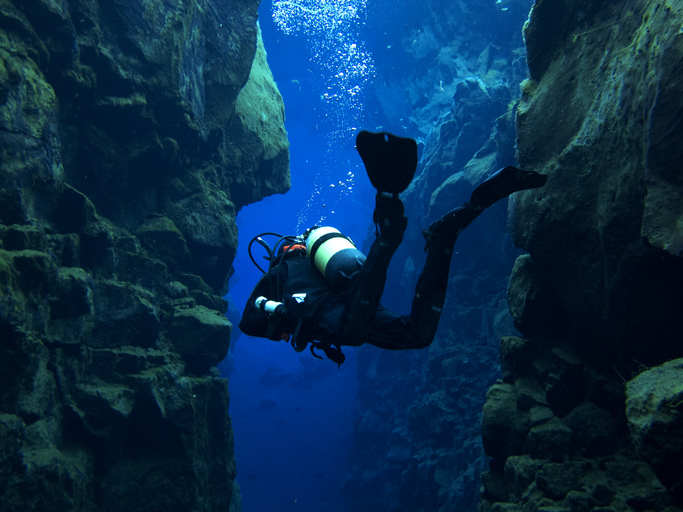
One of the most exhilarating aquatic adventures in Iceland is diving or snorkeling in Silfra, a fissure located in the Þingvellir National Park. This fissure, filled with glacial meltwater from the nearby Langjökull glacier, is not just a crack in the ground, it’s actually a rift between two continents. Here, you have the unique opportunity to swim between the North American and Eurasian tectonic plates. It’s literally a once-in-a-lifetime experience to be in the gap between two continents, touching Europe with one hand and North America with the other. This captivating geological peculiarity coupled with the breathtaking underwater visibility makes this activity a must-have on any adventure traveler’s bucket list.
Silfra’s glacial water is renowned for its exceptional clarity, with visibility often exceeding 100 meters. This is because the water is naturally filtered through porous volcanic rock over decades, resulting in some of the clearest water on the planet. As you glide through the fissure, you’ll encounter a mesmerizing underwater landscape of deep blues and greens, ancient lava rocks, and floating particles that shimmer like diamonds in the sunlight. You might even feel like you’re flying rather than swimming, as the water is so clear it’s easy to forget you’re underwater. Whether you choose to snorkel on the water’s surface or dive deeper into the rift (requires a dry suit), exploring Silfra offers a unique and awe-inspiring perspective of Iceland’s extraordinary geology. This is more than just an aquatic adventure; it’s an encounter with the raw forces that have shaped and continue to shape our planet.
The Golden Circle
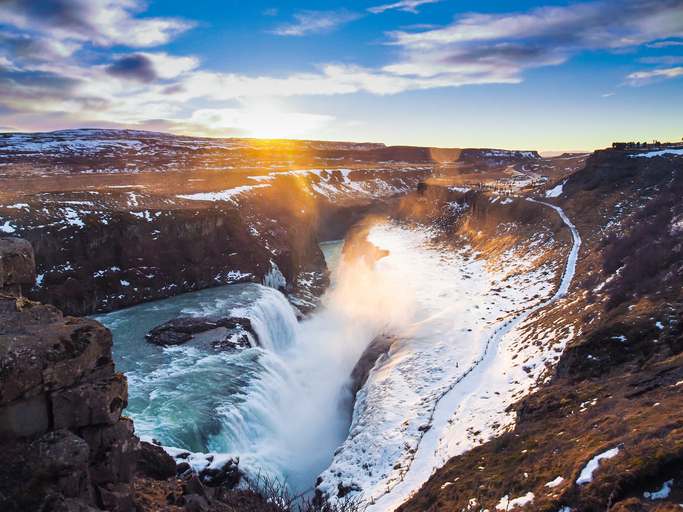
The Golden Circle route is one of the most popular tourist excursions in Iceland and for good reason. This roughly 300-kilometer loop offers a glimpse into the diverse beauty of Iceland’s geological wonders, conveniently located within a day’s drive from Reykjavík. The route typically includes three iconic stops: Þingvellir National Park, the Geysir Geothermal Area, and Gullfoss Waterfall. These sites provide a well-rounded impression of Iceland’s natural beauty, from geothermal activity to historical significance, all under the span of a day.
Þingvellir National Park is your first stop, recognized as a UNESCO World Heritage site due to its historical and geological significance. Here, you can witness the rift valley caused by the separation of two tectonic plates, a testament to the country’s geological dynamism. The second stop is the Geysir Geothermal Area, home to Strokkur, an active geyser that erupts every 5-10 minutes, reaching heights of up to 30 meters. This geothermal park illustrates the country’s powerful seismic activity. Lastly, there’s Gullfoss Waterfall, a stunning two-tiered waterfall that plunges into a deep canyon. The raw power of Gullfoss is mesmerizing and demonstrates the force of Iceland’s glacial rivers.
Along the route, visitors often add optional stops such as the Kerid Crater Lake or the Secret Lagoon, making their Golden Circle experience even more memorable. This compact but diverse tour truly captures the essence of Iceland’s geological magnificence, and it’s a must-do for any first-time visitor. Book an all-inclusive Golden Circle Tour and more here.
Reykjavik’s Nightlife
Reykjavík, despite its small size, is known for having a lively and varied nightlife scene that can easily rival those of larger cities. The city center is packed with pubs, clubs, and music venues that cater to a range of tastes, from quiet, cozy bars for a relaxed evening drink to pulsating clubs where you can dance until the early hours. The nightlife in Reykjavík really comes alive on the weekends, when locals and tourists alike take to the streets to enjoy the city’s vibrant “rúntur” (round tour) bar crawl. This well-established tradition involves moving from one bar to the next, usually starting late and continuing until morning.
Live music plays a significant role in Reykjavík’s nightlife, with numerous venues showcasing both local and international acts. Places like Gaukurinn and Húrra are known for their live music events, which range from rock and indie to jazz and electronic music.
For those who prefer a more chilled-out evening, the city offers an impressive range of craft beer bars like Micro Bar and Skúli Craft Bar, as well as wine bars such as Vinbarinn. Reykjavík’s nightlife is also quite unique due to the nearly 24-hour daylight in the summer months, which adds a surreal touch to the party scene.
Music and Art Festivals
Iceland’s vibrant cultural scene comes to life in its many music and art festivals, showcasing the country’s creative talent and providing an opportunity for cultural immersion. These festivals are a platform for both local and international artists, and their diverse lineups offer a taste of various music genres and artistic styles. They’re an integral part of Iceland’s cultural fabric, uniting communities, attracting global visitors, and inspiring a love for the arts.
Among the most prominent is the annual Iceland Airwaves music festival, typically held in November in Reykjavík. Originally starting as a one-off event in an airplane hangar in 1999, it has grown to become one of the most anticipated indie music festivals globally. With a focus on showcasing new talent, it provides a stage for both rising Icelandic artists and international acts. The festival spreads across various venues in Reykjavík, from bars and art museums to concert halls, creating a city-wide music celebration. Past lineups have included artists like Björk, Of Monsters and Men, and Sigur Rós.
Art festivals, like the Reykjavík Art Festival, bring a variety of visual and performance arts to the city. This festival, one of the oldest and most respected arts festivals in Europe, takes place annually and includes theatre performances, dance, visual arts, and music. It draws artists from around the world, contributing to a rich exchange of ideas and artistic expressions.
Westfjords Region
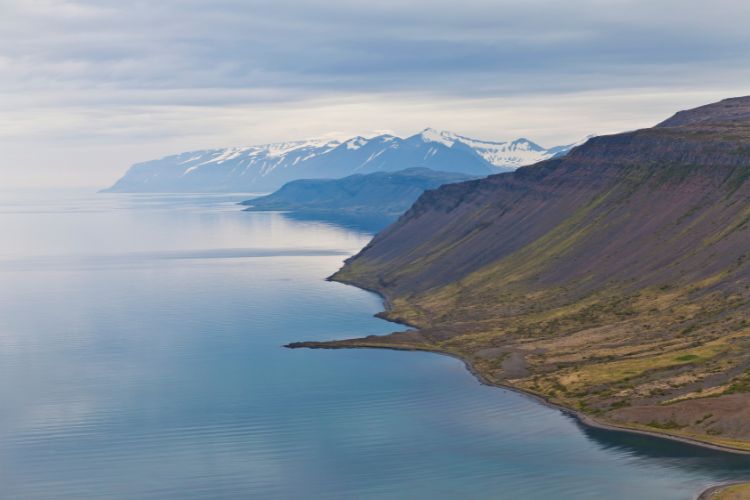
The Westfjords region of Iceland, a remote and rugged peninsula in the country’s northwest, is a true hidden gem for adventure-seeking travelers. Less trodden than the popular south coast or Golden Circle route, the Westfjords offer an authentic, off-the-beaten-path Icelandic experience. The area is characterized by deep, dramatic fjords, towering cliffs, vast wilderness, and small, idyllic fishing villages. With its sparse population and untouched landscapes, the Westfjords offer an extraordinary sense of peace and isolation, allowing visitors to connect with nature in its most raw and powerful form.
Wildlife sightings are a significant highlight of the Westfjords. The region is home to the largest bird cliff in Europe, Látrabjarg, a must-visit spot for bird watchers. Here, you can witness millions of seabirds, including puffins, guillemots, and razorbills, nesting during the summer months. The Westfjords are also a great place to spot seals and Arctic foxes, and the surrounding waters are frequented by different species of whales.
Adventure opportunities are plentiful here as well, with excellent hiking trails, kayak journeys, and opportunities for sea angling. Make sure to visit the magical Dynjandi waterfall, a series of cascades resembling a bridal veil, and the Rauðasandur, a unique red sand beach. For those seeking tranquility, immersion in wild nature, and a sense of adventure, the Westfjords region of Iceland is an unforgettable destination.
Birdwatching
Birdwatching is an especially rewarding activity in Iceland this year due to the country’s unique geographical position and diverse habitats, which make it a haven for a wide variety of bird species. Its coastline, wetlands, cliffs, and grasslands provide suitable breeding grounds for birds, many of which are not found anywhere else in Europe. The country’s long summer days offer extended hours of daylight, providing ample opportunities for birdwatching.
Iceland’s most iconic bird is undoubtedly the Atlantic Puffin. More than half of the world’s puffin population breeds in Iceland, making it an excellent place to spot these charming birds. During the breeding season from April to August, puffins nest in cliffside burrows and can often be seen flying back and forth from the sea, where they catch their food. The Westman Islands, Látrabjarg cliffs in the Westfjords, and Dyrhólaey peninsula on the South Coast are among the best places to observe these birds.
Apart from puffins, Iceland is home to a multitude of other bird species, such as the Arctic Tern known for its incredible migratory journey, the colorful Harlequin Duck, and the White-tailed Eagle, Iceland’s largest bird of prey. The Lake Mývatn area in North Iceland is a birdwatcher’s paradise due to its rich birdlife, especially ducks.
Photography Opportunities
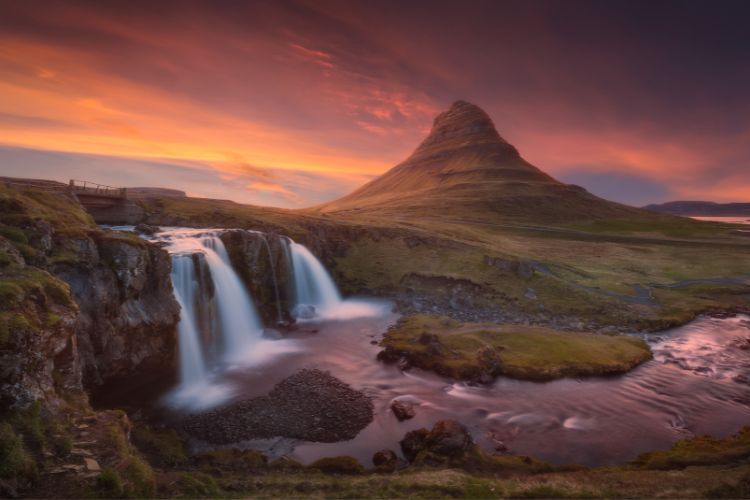
For photographers, both professional and amateur, Iceland presents a treasure trove of captivating scenes and unique landscapes, if you haven’t already noticed. As we’ve already described, every corner of the country offers something different, from sprawling glaciers and gushing waterfalls to rugged mountain ranges and black sand beaches.
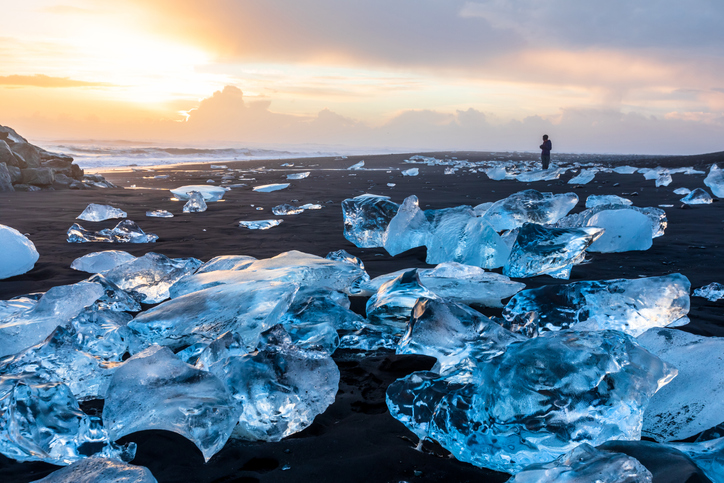
The Snæfellsnes Peninsula, often referred to as “Iceland in Miniature,” boasts a diversity of landscapes within a relatively small area. Here, you can capture the majestic Snæfellsjökull glacier, the dramatic sea cliffs of Arnarstapi, the iconic Kirkjufell mountain with its accompanying waterfall, and much more.
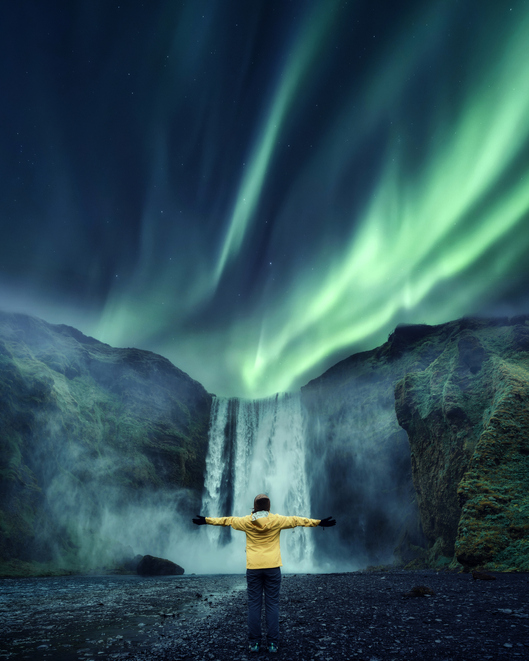
The Northern Lights are another captivating subject for photography. Between September and April, you have the chance to capture this breathtaking phenomenon. The absence of light pollution in many parts of the country offers perfect conditions to photograph the auroras dancing across the sky.
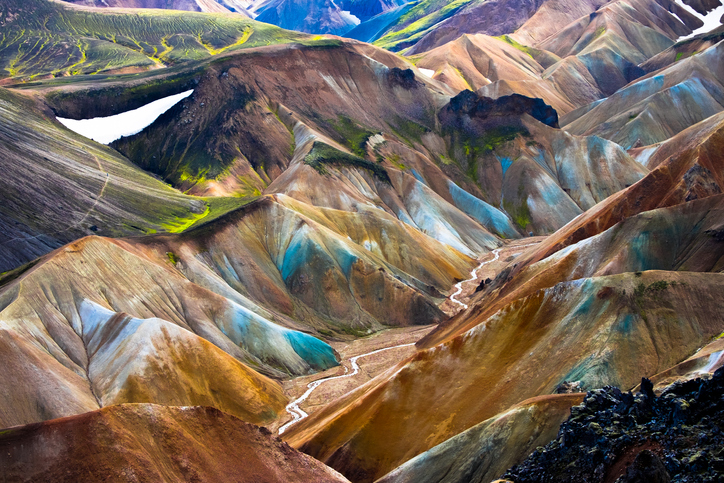
Lastly, the capital city of Reykjavík shouldn’t be overlooked. From the impressive architecture of Hallgrímskirkja church and the Harpa concert hall to the colorful old town houses and vibrant street art, there are plenty of urban scenes to capture.
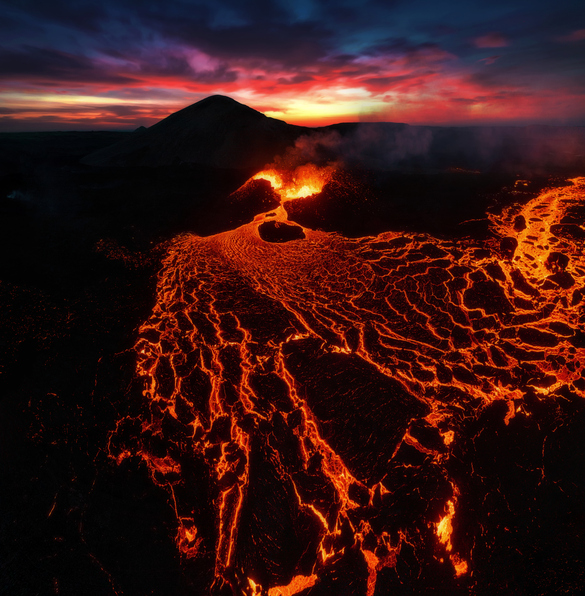
Incredible Canyons
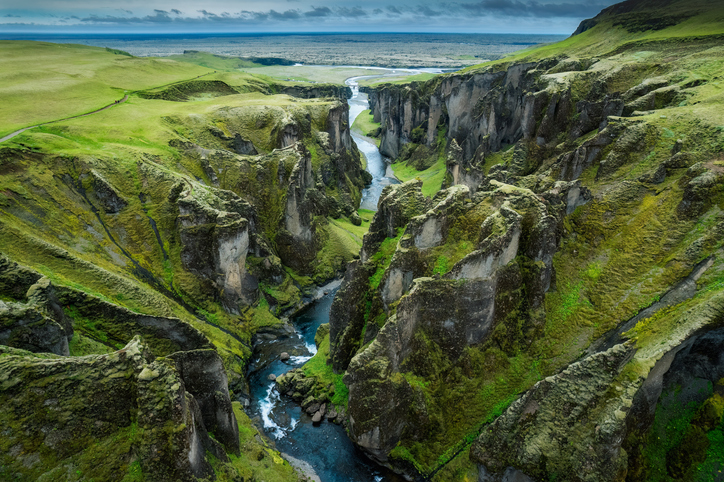
Iceland’s canyons, with their rugged beauty and unique geological formations, are a testament to the country’s volcanic origins and the relentless power of its rivers and glaciers. One of the most striking examples is Fjaðrárgljúfur, a massive canyon located in South Iceland. This 100 meter deep and 2 kilometer long canyon is believed to have been formed around two million years ago during the Ice Age. Fjaðrárgljúfur is a wonderland of winding paths, cascading waterfalls, and moss-covered basaltic strata. The patterns and textures of the basalt, along with the lush green vegetation, make this canyon a surreal and enchanting spot for photography and exploration.
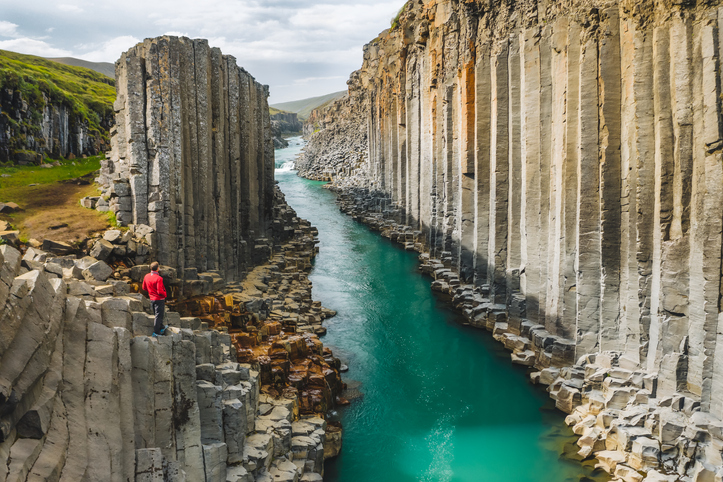
Stuðlagil Canyon in east Iceland is another phenomenal site that showcases the unique beauty of basalt columns. This relatively hidden gem was revealed only recently when a hydroelectric dam was built upstream, lowering the water level of the Jökulsá á Dal river. As the river’s depth decreased, it unveiled one of the largest collections of basalt columns in the world. The columns, formed by the cooling and cracking of thick lava flows, are incredibly regular, creating a stunning geometric pattern. The turquoise hue of the glacial river running through the canyon, contrasting with the dark basalt and green foliage, presents an enchanting view that’s both tranquil and awe-inspiring. These unique canyons offer a glimpse into Iceland’s dynamic geological past and its continuously evolving landscapes.
Frequently Asked Questions about Visiting Iceland
You are reading “The Best Things to Do and Places to Visit in Iceland This Year”: Back To Top
what to do in Iceland, Iceland tours, things to do in Iceland, is Iceland worth visiting: adventure travel experiences
If you enjoyed this guide, consider joining the Facebook Group to interact with other Winetravelers and for wine travel inspiration around the world. Be sure to follow us on both Twitter and Instagram to stay up to date with our trending content.
Images throughout courtesy Greig Santos-Buch, Getty Images/iStock.
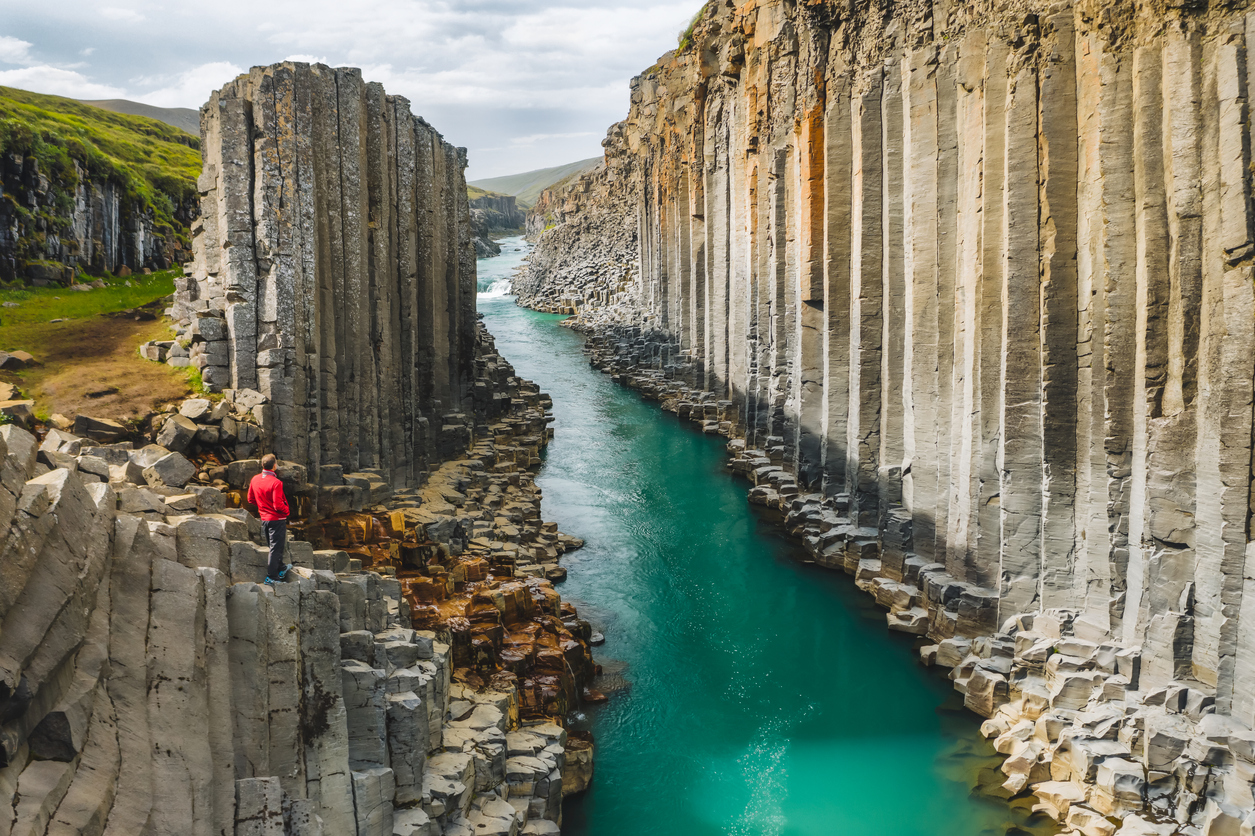
Great article!!! So informative 🙌🏽 Makes me want to visit Iceland!
very informational article